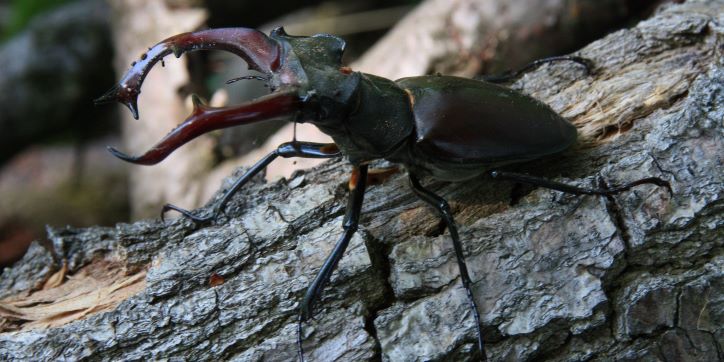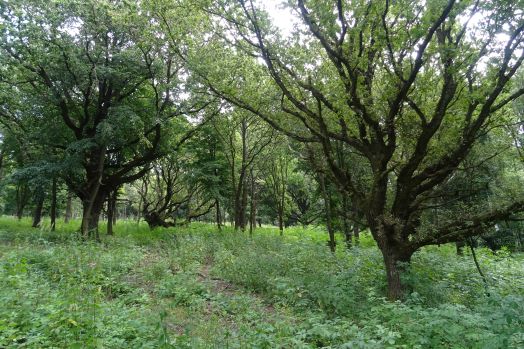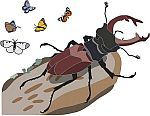Stag Beetle - LIFE for insects
Stag Beetle
Target Species
Stag beetle (Lucanus cervus)

is the largest European beetle – males can reach up to 9 cm in length (including their mandibles), while females are smaller with inconspicuous mandibles. Male mandibles are not intended for hunting or defence, but as a weapon in battles with other males that they undergo in the crowns of old trees. After mating, females lay eggs in rotting trunks, cavities, and roots of old and massive trees, mainly oaks, but also other species of deciduous trees. The larvae hatch from the eggs and take up to five years to develop, growing up to 10 cm in size. The larvae make a cocoon from rotten wood and their droppings and pupate.

Adult individuals can be seen from the end of May until about August, so they live only a few weeks and die after mating. Stag beetles live in open canopy middle deciduous forests with large trees. Nowadays, we can find them mainly in chateau parks, avenues, gardens, and on the banks of ponds, where they look for old dying trees, their trunks and stumps. These places are reminiscent in their structure of wood pastures; these were very common in the past but are now almost non- existent in our landscape, and therefore the beetles are pushed into the vicinity of towns and villages. In the Czech Republic, the stag beetle occurs mainly in South and Central Moravia and in the warmest parts of Central, South, and North Bohemia.
